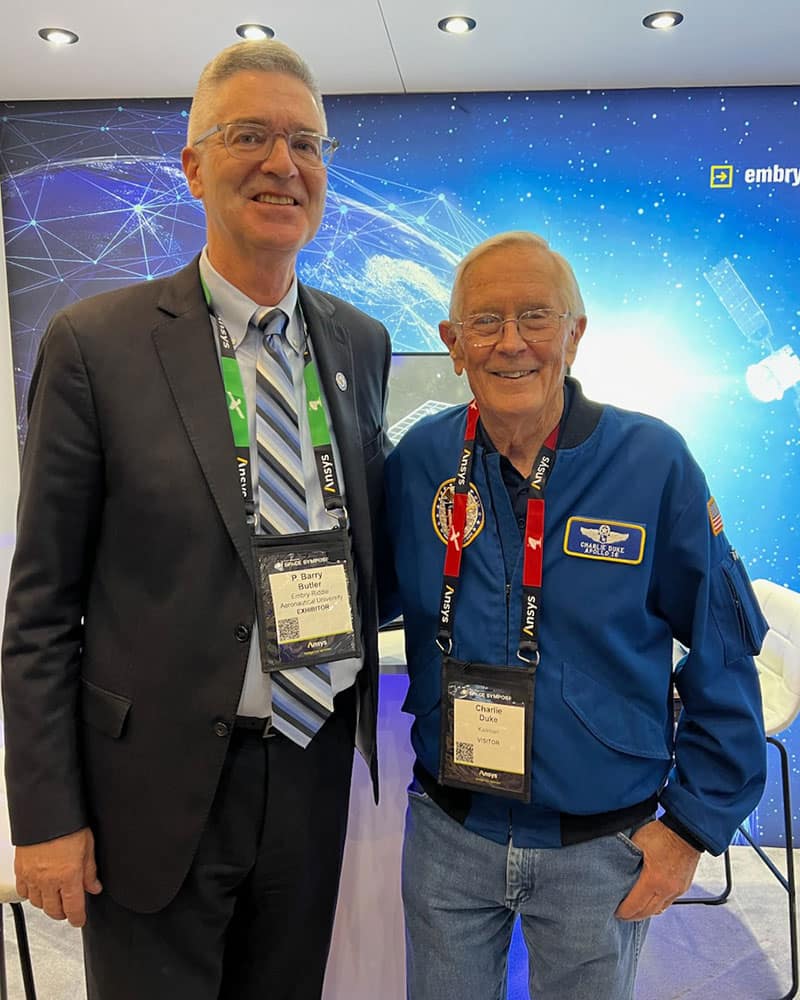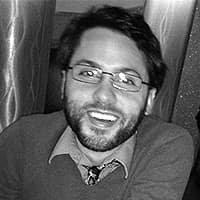Apollo 16 Astronaut Inspires Embry-Riddle President to Explore Further, Faster

Amidst a crowd of more than 10,000 space professionals last week at the Space Foundation’s 39th annual Space Symposium, hosted this year in Colorado, Embry-Riddle Aeronautical University President P. Barry Butler, Ph.D., had the privilege of meeting Apollo 16 astronaut Charles Duke. In 1972, when Duke was 36 years old, he became the tenth and youngest person ever to walk on the moon.
“As Embry-Riddle forges ahead in developing the next generation of aerospace talent, it was truly energizing to interact with such a legend in the field,” Butler said. “More than 50 years after Duke set foot on the lunar surface, the moon remains largely unexplored — but we Eagles are eager to change that.”
In February, Embry-Riddle made history by landing the first-ever student-built hardware on the moon — a CubeSat camera system called EagleCam.
Additionally, Embry-Riddle has accomplished many other “firsts” in space exploration — such as alumnus Jared Isaacman (’11) leading the first all-civilian space mission, Inspiration4, in 2021. Later this year, he will also lead SpaceX’s Polaris Dawn mission, which aims to perform the first-ever spacewalk from a non-government-employed astronaut. The spacewalk will also be filmed on hardware built by Eagles.
A total of nine Embry-Riddle alumni have gone on to become astronauts, and the university continues to innovate throughout the fields of space technology, research and rocketry. In point of fact, Eagle researcher Dr. Aroh Barjatya launched three rockets into Earth’s upper atmosphere earlier this month during the solar eclipse to better understand how communication disruptions are caused by space-based changes.
“We study outer space to better understand life on our home planet, and there is no limitation on how much we can learn or how far we can travel,” Butler added. “Meeting Mr. Duke served as a reminder of how far we’ve come, but it’s especially exciting to think about how much more there is out there to explore.”
Posted In: Institutional News | Space

 Mike Cavaliere
Mike Cavaliere